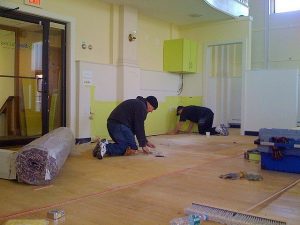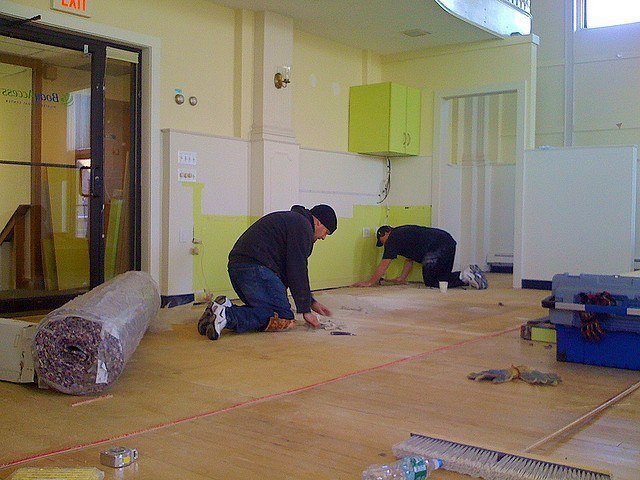The plywood basement floor is a carpet that is sometimes known to slide and squeak, and we all find this very annoying, especially if this happens in the basement or rooms where people rest and study.
A squeaky plywood floor can be very upsetting can sometimes even be highly embarfor you. On a more serious note, the squeakiness of the hardwood flooring surface is an indication of a mechanical issue.
Such issues might lead to cracking and degradation of the plywood on the finished floor in your house in the long run. Thus, it is essential not to take a squeaking floor lightly and get to fixing it as soon as possible. You will surely ask how to locate and fix a squeaky floor.
What Causes the Squeaks in Plywood Floor
Before you fix the squeaky plywood floor, you must first know the cause and location of the squeaks. A squeak is usually produced in the wood floors when movement between the wood seams or gaps between the plywood subflooring sheets occurs, causing a frictional noise.
This movement of the entire floor is most likely caused by ill-fitting floorboards. Thus, when you step on these loose floorboards, they slide and rub against each other, producing a squeaky sound. A floor squeak can also be caused by loosening the nails holding the plywood.
Methods of Fixing Squeaky Plywood Floor
Squeaky plywood floors can be fixed in some ways, but the trick is to know the root cause of the squeak first. Only after knowing this would you be able to fix the noise without any failures. The following are some methods that can be employed for fixing a squeaky floor of carpeted plywood.
Saw Kerf Method
If the friction between the loose floorboards and construction adhesive is the reason behind the noisy floor, then the easiest and most effective way to fix it is to put an adhesive or some lubricant, like powdered graphite, in the gap between plies to the glue and prevent the wood rubbing them from the adhesive gap and rubbing against the adhesive and each other.
However, it is a temporary fix and might not stop the squeaking noise entirely. On the other hand, the Saw Kerf method can permanently resolve the squeak issue with plywood. In this method, you must open up the joint using a circular saw so the floorboards no longer rub against each other.
Make sure only to create a saw kerf (blade length, angle, and thickness of space) between the floorboards and no more. It is important to remember that this installation method can only be used if the squeaky noise is created by seams between the boards rubbing the beams and not the edges present directly over the beam.
Screwing the Nails In
 Two persons fixing a wood flooring, Juhan Sonin
Two persons fixing a wood flooring, Juhan Sonin
If a loosened screw or nail causes the joints in the plywood to squeak, the proper action would be to bang or glue the nail in again. The squeaking noise will stop immediately as soon as the nail is glued back in place. However, in most cases, this would be a temporary fix at best, and the nail would not remain in its place for long, and the squeaky joint noise would return.
To fix the subfloors problem, more squeaks permanently, screwing the nails into the floorboard is much better. Screws can maintain their position much better than nails and offer more significant support. One thing to remember when screwing the nails in subflooring is to press the screw well down on the surface of the wood in the most squeaky floor area.




